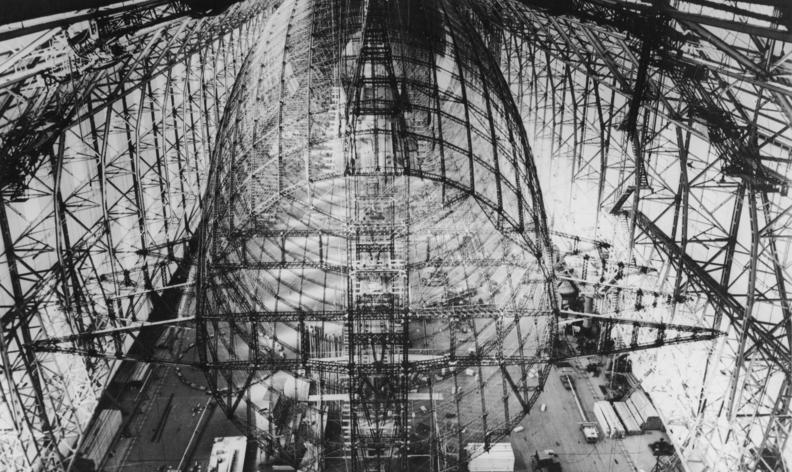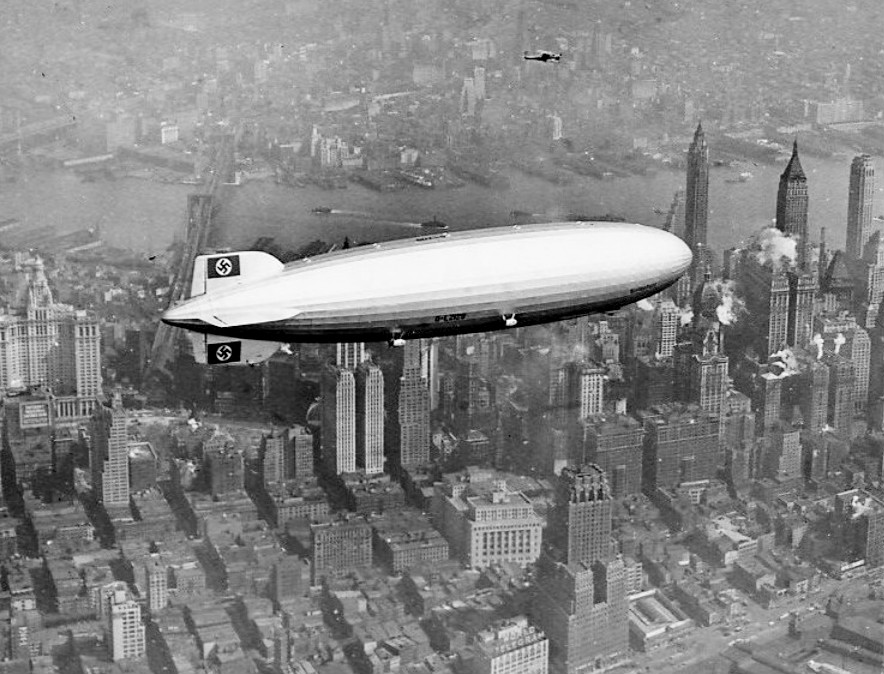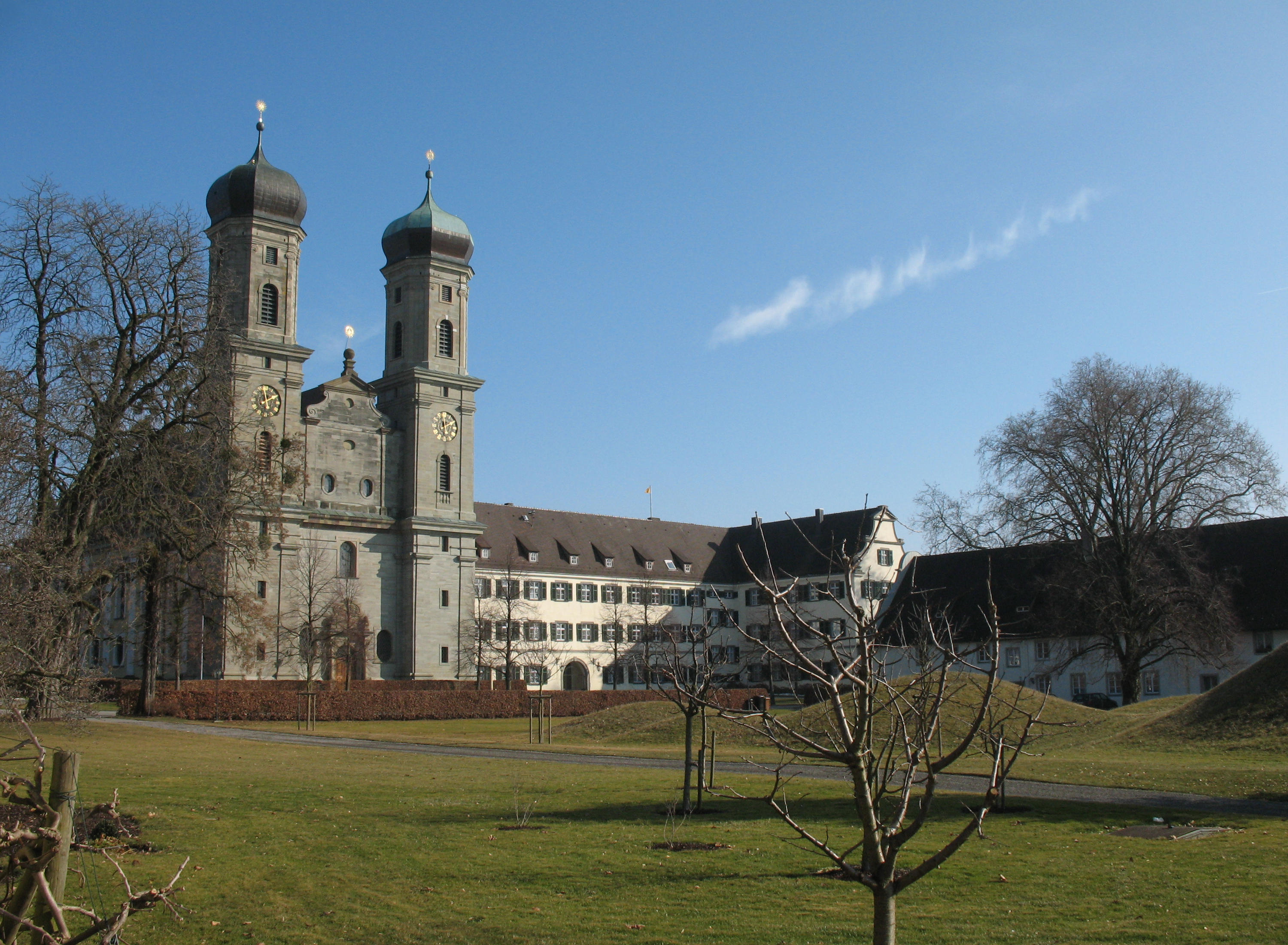|
Zeppelin
A Zeppelin is a type of rigid airship named after the German inventor Count Ferdinand von Zeppelin () who pioneered rigid airship development at the beginning of the 20th century. Zeppelin's notions were first formulated in 1874Eckener 1938, pp. 155–157. and developed in detail in 1893.Dooley 2004, p. A.187. They were patented in Germany in 1895 and in the United States in 1899. After the outstanding success of the Zeppelin design, the word ''zeppelin'' came to be commonly used to refer to all rigid airships. Zeppelins were first flown commercially in 1910 by Deutsche Luftschiffahrts-AG (DELAG), the world's first airline in revenue service. By mid-1914, DELAG had carried over 10,000 fare-paying passengers on over 1,500 flights. During World War I, the German military made extensive use of Zeppelins as bombers and as scouts, resulting in over 500 deaths in bombing raids in Britain. The defeat of Germany in 1918 temporarily slowed the airship business. Although DELAG establish ... [...More Info...] [...Related Items...] OR: [Wikipedia] [Google] [Baidu] |
LZ 127 Graf Zeppelin
LZ 127 ''Graf Zeppelin'' () was a German passenger-carrying, hydrogen-filled rigid airship that flew from 1928 to 1937. It offered the first commercial transatlantic passenger flight service. Named after the German airship pioneer Ferdinand von Zeppelin, a count () in the German nobility, it was conceived and operated by Dr. Hugo Eckener, the chairman of Luftschiffbau Zeppelin. ''Graf Zeppelin'' made 590 flights totalling almost 1.7 million kilometres (over 1 million miles). It was operated by a crew of 36, and could carry 24 passengers. It was the longest and largest airship in the world when it was built. It made the first circumnavigation of the world by airship, and the first nonstop crossing of the Pacific Ocean by air; its range was enhanced by its use of Blau gas as a fuel. It was built using funds raised by public subscription and from the German government, and its operating costs were offset by the sale of special postage stamps to collectors, the support of the ... [...More Info...] [...Related Items...] OR: [Wikipedia] [Google] [Baidu] |
Ferdinand Von Zeppelin
Count Ferdinand von Zeppelin (german: Ferdinand Adolf Heinrich August Graf von Zeppelin; 8 July 1838 – 8 March 1917) was a German general and later inventor of the Zeppelin rigid airships. His name soon became synonymous with airships and dominated long-distance flight until the 1930s. He founded the company Luftschiffbau Zeppelin. Family and personal life Ferdinand was the scion of a noble family. Zepelin, the family's eponymous hometown, is a small community outside the town of Bützow in Mecklenburg. Ferdinand was the son of Württemberg Minister and Hofmarschall Friedrich Jerôme Wilhelm Karl Graf von Zeppelin (1807–1886) and his wife Amélie Françoise Pauline (born Macaire d'Hogguer) (1816–1852). Ferdinand spent his childhood with his sister and brother at their Girsberg manor near Konstanz, where he was educated by private tutors. Ferdinand married Isabella Freiin von Wolff in Berlin. She was from the house of Alt-Schwanenburg (located in the present-day to ... [...More Info...] [...Related Items...] OR: [Wikipedia] [Google] [Baidu] |
Airship
An airship or dirigible balloon is a type of aerostat or lighter-than-air aircraft that can navigate through the air under its own power. Aerostats gain their lift from a lifting gas that is less dense than the surrounding air. In early dirigibles, the lifting gas used was hydrogen, due to its high lifting capacity and ready availability. Helium gas has almost the same lifting capacity and is not flammable, unlike hydrogen, but is rare and relatively expensive. Significant amounts were first discovered in the United States and for a while helium was only available for airships in that country. Most airships built since the 1960s have used helium, though some have used hot air.A few airships after World War II used hydrogen. The first British airship to use helium was the ''Chitty Bang Bang'' of 1967. The envelope of an airship may form the gasbag, or it may contain a number of gas-filled cells. An airship also has engines, crew, and optionally also payload accommodation ... [...More Info...] [...Related Items...] OR: [Wikipedia] [Google] [Baidu] |
LZ 129 Hindenburg
LZ 129 ''Hindenburg'' (; Registration: D-LZ 129) was a German commercial passenger-carrying rigid airship, the lead ship of the ''Hindenburg'' class, the longest class of flying machine and the largest airship by envelope volume. It was designed and built by the Zeppelin Company ( ''Luftschiffbau Zeppelin GmbH'') on the shores of Lake Constance in Friedrichshafen, Germany, and was operated by the German Zeppelin Airline Company (''Deutsche Zeppelin-Reederei''). It was named after Field Marshal Paul von Hindenburg, who was President of Germany from 1925 until his death in 1934. The airship flew from March 1936 until it was destroyed by fire 14 months later on May 6, 1937, while attempting to land at Lakehurst Naval Air Station in Manchester Township, New Jersey, at the end of the first North American transatlantic journey of its second season of service. This was the last of the great airship disasters; it was preceded by the crashes of the British R38, the US airship ''Roma ... [...More Info...] [...Related Items...] OR: [Wikipedia] [Google] [Baidu] |
Rigid Airship
A rigid airship is a type of airship (or dirigible) in which the envelope is supported by an internal framework rather than by being kept in shape by the pressure of the lifting gas within the envelope, as in blimps (also called pressure airships) and semi-rigid airships. Rigid airships are often commonly called Zeppelins, though this technically refers only to airships built by the Luftschiffbau Zeppelin company. In 1900, Count Ferdinand von Zeppelin successfully performed the maiden flight of his first airship; further models quickly followed. Prior to the First World War, Germany was a world leader in the field, largely attributable to the work of von Zeppelin and his Luftschiffbau Zeppelin company. During the conflict, rigid airships were tasked with various military duties, which included their participation in Germany's strategic bombing campaign. Numerous rigid airships were produced and employed with relative commercial success between the 1900s and the late 1930s. The ... [...More Info...] [...Related Items...] OR: [Wikipedia] [Google] [Baidu] |
Deutsche Luftschiffahrts-AG
DELAG, acronym for ''Deutsche Luftschiffahrts-Aktiengesellschaft'' (German for "German Airship Travel Corporation"), was the world's first airline to use an aircraft in revenue service. It operated a fleet of zeppelin rigid airships manufactured by the Luftschiffbau Zeppelin Corporation. Its headquarters were located in Frankfurt, Germany. DELAG was founded on 16 November 1909 as a commercial passenger-carrying offshoot of Zeppelin Luftschiffbau. While the notion did not have the support of Count Ferdinand von Zeppelin, the inventor of the zeppelin, Alfred Colsman, the business manager of Zeppelin Luftschiffbau, gained both funding and promotion for passenger flights from Albert Ballin, the head of the Hamburg America Line. On 19 June 1910, DELAG's first zeppelin, designated LZ 7 and named ''Deutschland'', performed its first flight. Despite its loss on 28 June 1910, the company launched the improved ''Deutschland II'' and the LZ 10 ''Schwaben'' during the following year ... [...More Info...] [...Related Items...] OR: [Wikipedia] [Google] [Baidu] |
Hindenburg Disaster
The ''Hindenburg'' disaster was an airship accident that occurred on May 6, 1937, in Manchester Township, New Jersey, United States. The German passenger airship LZ 129 ''Hindenburg'' caught fire and was destroyed during its attempt to dock with its mooring mast at Naval Air Station Lakehurst. The accident caused 35 fatalities (13 passengers and 22 crewmen) from the 97 people on board (36 passengers and 61 crewmen), and an additional fatality on the ground. The disaster was the subject of newsreel coverage, photographs and Herbert Morrison's recorded radio eyewitness reports from the landing field, which were broadcast the next day. A variety of theories have been put forward for both the cause of ignition and the initial fuel for the ensuing fire. The publicity shattered public confidence in the giant, passenger-carrying rigid airship and marked the abrupt end of the airship era. Flight Background The ''Hindenburg'' made 10 trips to the United States in 1936. ... [...More Info...] [...Related Items...] OR: [Wikipedia] [Google] [Baidu] |
Friedrichshafen
Friedrichshafen ( or ; Low Alemannic: ''Hafe'' or ''Fridrichshafe'') is a city on the northern shoreline of Lake Constance (the ''Bodensee'') in Southern Germany, near the borders of both Switzerland and Austria. It is the district capital (''Kreisstadt'') of the Bodensee district in the federal state of Baden-Württemberg. Friedrichshafen has a population of about 58,000. History 19th and early 20th century Friedrichshafen was established in 1811 as part of the new Kingdom of Württemberg, an ally of France during the Napoleonic Wars. It was named for King Frederick I of Württemberg, who privileged it as a free port and transshipment point for the kingdom's Swiss trade. Friedrichshafen was created from the former city of Buchhorn, whose coat of arms it adopted. The new city also incorporated the former village of Hofen, whose monastery was refurbished to serve as the summer residence of the Württemberger kings. King William I continued improving the city, including the purch ... [...More Info...] [...Related Items...] OR: [Wikipedia] [Google] [Baidu] |
Hindenburg-class Airship
The two ''Hindenburg''-class airships were hydrogen-filled, passenger-carrying rigid airships built in Germany in the 1930s and named in honor of Paul von Hindenburg. They were the last such aircraft to be constructed, and in terms of their length, height, and volume, the largest aircraft ever built. During the 1930s, airships like the ''Hindenburg'' class were widely considered the future of air travel, and the lead ship of the class, LZ 129 ''Hindenburg'', established a regular transatlantic service. The airship's destruction in a highly publicized accident was the end of these expectations. The second ship, LZ 130 ''Graf Zeppelin'', was never operated on a regular passenger service, and was scrapped in 1940 along with its namesake predecessor, the LZ 127 ''Graf Zeppelin'', by order of Hermann Göring. Design and development The ''Hindenburg'' class were built entirely from duralumin. The leader of the design team was Ludwig Dürr, who had overseen the design of all Zep ... [...More Info...] [...Related Items...] OR: [Wikipedia] [Google] [Baidu] |
USS Los Angeles (ZR-3)
USS ''Los Angeles'' was a rigid airship, designated ZR-3, which was built in 1923–1924 by the Zeppelin company in Friedrichshafen, Germany, as war reparations. It was delivered to the United States Navy in October 1924 and after being used mainly for experimental work, particularly in the development of the American parasite fighter program, was decommissioned in 1932. Design The second of four vessels to carry the name USS ''Los Angeles'', the airship was built for the United States Navy as a replacement for the Zeppelins that had been assigned to the United States as war reparations following World War I, and had been sabotaged by their crews in 1919. Under the terms of the Treaty of Versailles Luftschiffbau Zeppelin were not permitted to build military airships. In consequence ''Los Angeles'', which had the Zeppelin works number LZ 126, was built as a passenger airship, although the treaty limitation on the permissible volume was waived, it being agreed that a craft ... [...More Info...] [...Related Items...] OR: [Wikipedia] [Google] [Baidu] |
Transatlantic Flight
A transatlantic flight is the flight of an aircraft across the Atlantic Ocean from Europe, Africa, South Asia, or the Middle East to North America, Central America, or South America, or ''vice versa''. Such flights have been made by fixed-wing aircraft, airships, balloons and other aircraft. Early aircraft engines did not have the reliability nor the power to lift the required fuel to make a transatlantic flight. There were difficulties navigating over the featureless expanse of water for thousands of miles, and the weather, especially in the North Atlantic, is unpredictable. Since the middle of the 20th century, however, transatlantic flight has become routine, for commercial, military, diplomatic, and other purposes. History The idea of transatlantic flight came about with the advent of the hot air balloon. The balloons of the period were inflated with coal gas, a moderate lifting medium compared to hydrogen or helium, but with enough lift to use the winds that would later be ... [...More Info...] [...Related Items...] OR: [Wikipedia] [Google] [Baidu] |
Duralumin
Duralumin (also called duraluminum, duraluminium, duralum, dural(l)ium, or dural) is a trade name for one of the earliest types of age-hardenable aluminium alloys. The term is a combination of '' Dürener'' and ''aluminium''. Its use as a trade name is obsolete. Today the term mainly refers to aluminium–copper alloys, designated as the 2000 series by the international alloy designation system (IADS), as with 2014 and 2024 alloys used in airframe fabrication. History Duralumin was developed by the German metallurgist Alfred Wilm at Dürener Metallwerke AG. In 1903, Wilm discovered that after quenching, an aluminium alloy containing 4% copper would harden when left at room temperature for several days. Further improvements led to the introduction of duralumin in 1909. The name is mainly used in pop-science to describe all Al-Cu alloys system, or '2000' series, as designated through the international alloy designation system originally created in 1970 by the Aluminum A ... [...More Info...] [...Related Items...] OR: [Wikipedia] [Google] [Baidu] |











